Animal Sound Identification Guide
33 min read Updated for June, 2023
Seeing a wild animal and hearing one are two different things. But they share one thing in common—the potential fright-factor, which in the case of several animals, the noises they make will have you seeking safety in a heartbeat. These noises are also heard more and more frequently as forestland continues to develop into towns and neighborhoods. Identifying these sounds is not always easy. How many times in your own backyard have you thought, “What was that?” If you familiarize yourself with our guidelines and listen closely to the sounds inside and outside your home, our tips will help facilitate your ability to tell the difference between different animal sounds. Being able to identify animals by their sounds will tell you if should go back inside or even call animal control.
What Does a Cougar
Sound Like?
Play the clip below to hear the sounds a cougar makes.
Mountain Lion or Cougar

Geography and Characteristics
Technology has made us aware that mountain lions and cougars, in many cases, aren’t just staying in their natural habitat anymore. Outdoor cameras reveal that they have become frequent visitors to the edge of woodlands and to suburban backyards. Often referred to as cougars, mountain lions can be found in abundance from the U.S.-Canadian border all the way south to Texas and California. These animals can also be found in Alabama, Florida, Louisiana, and Tennessee.
Mountain Lion Sounds
Mountain lions can cover more than 20 miles a day searching for food. Unfortunately, sometimes that food can be your family pet. The animals are generally quiet, but the noises they make can sometimes be confused with other animals. Their growl and hiss can make them sound like an overgrown house cat. When they are out roaming, they also make noises that sound like a chirp or a person whistling. Many people have reported that mountain lions sound like birds making cute chirping sounds. This type of call is usually a mother looking for her children while they’re out. During mating season, you may hear the high-pitched, hair-raising scream of a female.
Is It Cause for Concern?
Like other felines, a mountain lion will growl when it feels threatened or aggressive. If you hear this sound and aren’t sure where it’s coming from or what’s making it, it’s best not to investigate any further. Mountain lions will likely stay away from you unless you seem like a threat, so hearing them out in the wild isn’t a cause for concern in it of itself.
How to Avoid a Mountain Lion
Mountain lion sightings most often occur during hiking or camping trips. If you’re doing either activity, always make sure you stay in groups. If you come across a dead animal or mountain lion cubs, keep moving and don’t linger. The dead animal will attract mountain lions as a food source, and you’ll be more prone to an attack if a mountain lion thinks you’re a threat to their cubs.
What Does a Coyote Sound Like?
Play the clip below to hear the sounds a coyote makes.
Coyotes
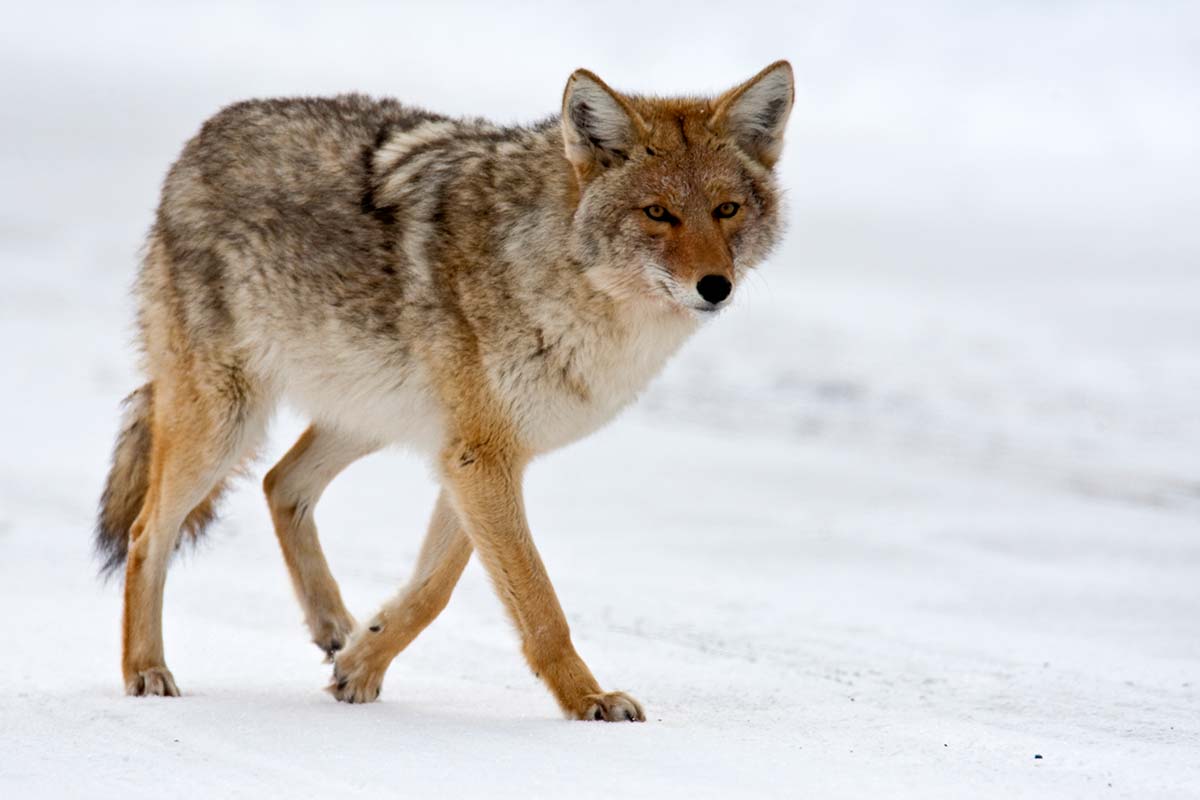
Geography and Characteristics
Coyotes live in every state in the U.S. except Hawaii. And they aren’t staying put deep in the forest either. In fact, in many cases they have become a nuisance. They’ve been spotted in New York City’s Central Park as well as urban environments such as Chicago and Atlanta. Because they are very adaptable animals who will eat just about anything, their population is actively growing.
Coyote Sounds
Coyotes are more active at night and will attack pets and farm animals, scavenge in your garbage, and possibly come a little too close to your home. Coyotes can sound like dogs, but they have a more extensive vocal repertoire. They’re often called the ‘song dog’ because of the many sounds they make. They growl, huff, bark, howl, yelp, whine, yodel and sometimes ‘sing’ in a group. Strange as it may seem, some experts even say coyotes will have different accents based on the part of the country they call home.
Coyote howl sounds are common to hear since they’re usually loud, but they can mean a variety of things. A lone howl could be a single coyote trying to find its pack, a group howl could be giving their location to others, and a loud bark-howl could be a distress signal.
Coyotes also scream as a distress single, which can signal that they’re injured. Unfortunately, this sound can be unsettling to hear at night as some have reported that a coyote sounds like a woman screaming.
Coyote pup sounds are higher-pitch yips and whining. If you hear coyote pups nearby, steer clear and call wildlife control if they’re in an area they shouldn’t be. Coming too close to coyote pups could be putting yourself in danger with the adult coyotes who may come to their rescue.
What Does a Fox Sound Like?
Play the clip below to hear the sounds a fox makes.
Foxes
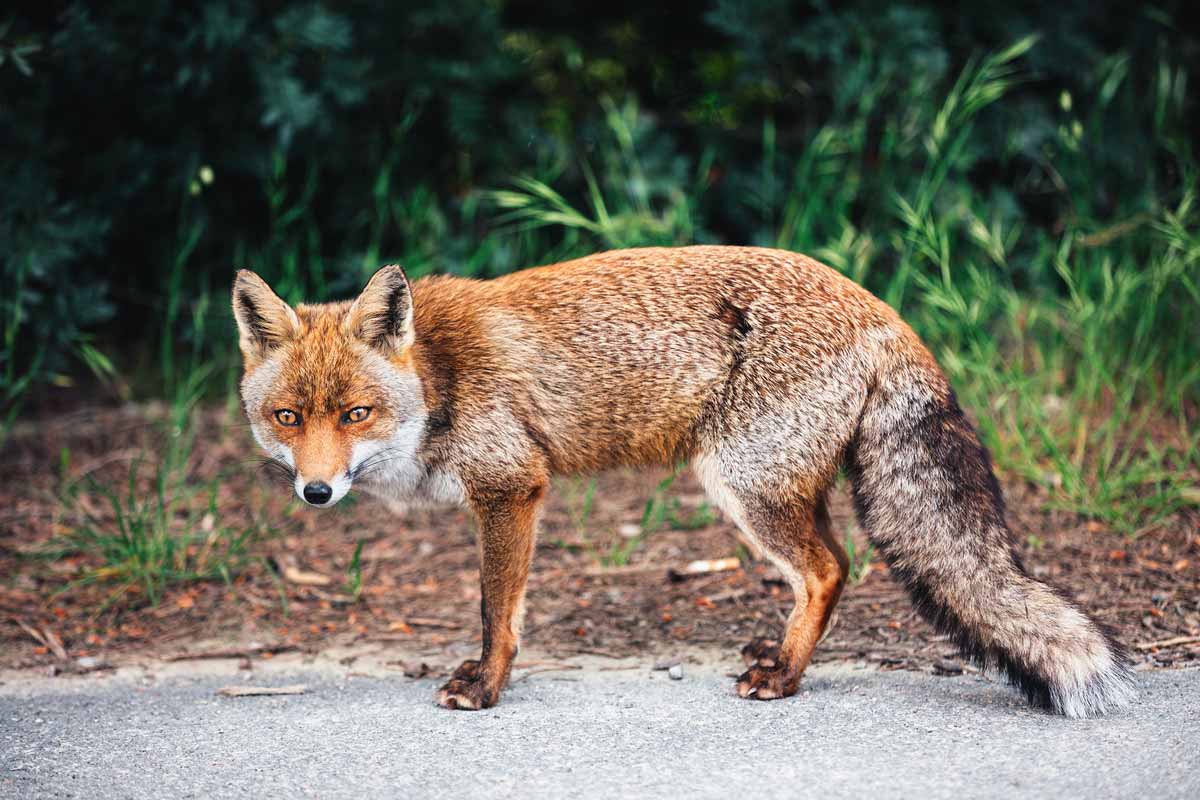
Geography and Characteristics
The most common type of foxes in the U.S. are the red and gray fox. They can be found in every state except Florida. They’re intelligent creatures that learn and adapt quickly. They aren’t typically a threat to humans, but they have been known to attack small pets or farm animals. In the case of one homeowner in Texas, he discovered a squirrel’s carcass on his back deck, and two nights later spotted a fox roaming the streets of his neighborhood.
Fox Sounds
Foxes make a barking sound, but it’s more high-pitched than the bark of your average dog. They make a shrill screaming sound during mating season that sounds eerie, frightening, and even similar to a human in distress.
Though a coyote is capable of a similar sound, a fox is more likely to sound like a woman screaming – causing a very frightening night if you happen to hear them.
Bobcats
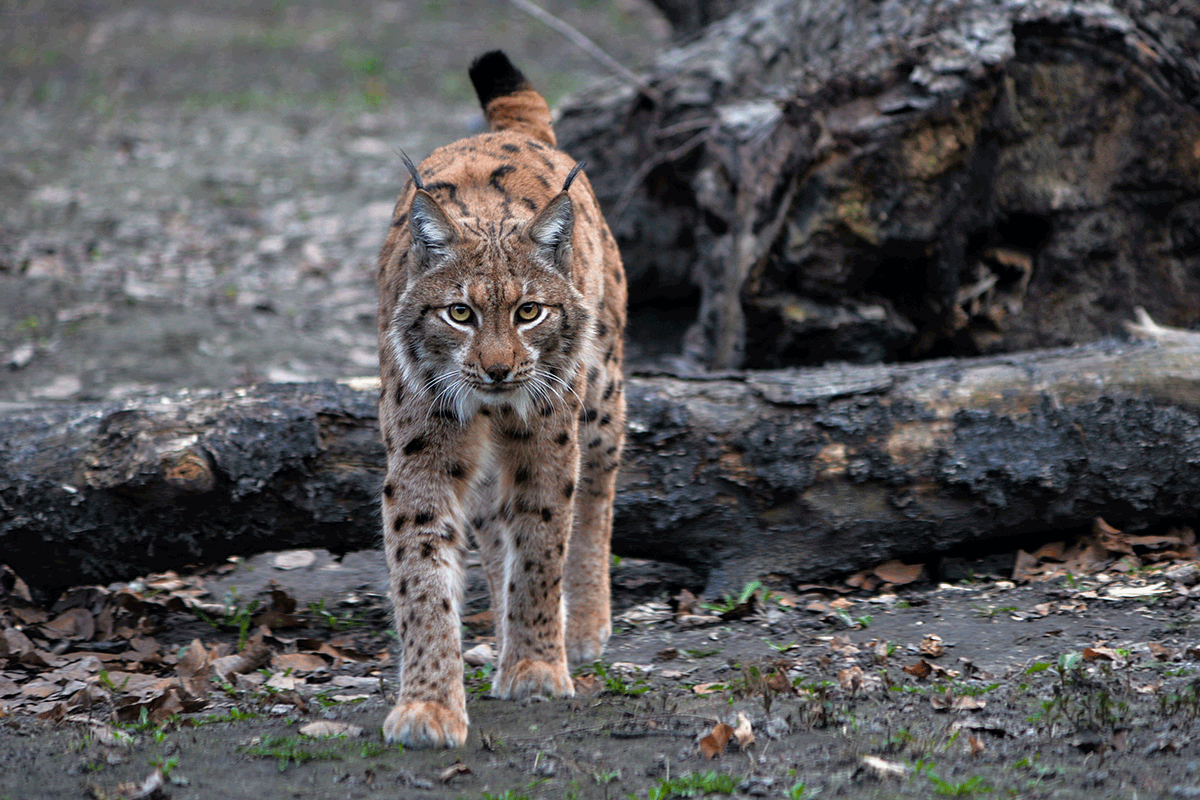
Geography and Characteristics
It’s estimated that about one million bobcats are roaming around North America. They are the most common wildcat in the United States, although hunting in the Midwest has decreased their population. The bobcat prefers rabbit for its diet, but also will eat rodents, birds, bats or lambs, pigs, and poultry if it’s hunting near a farm or ranch. They have also been known to attack dogs or cats in backyards, or humans if they feel threatened.
Bobcat Sounds
Like other types of cats, they hiss, growl, purr, and snarl. They also make cries that sound like a crying baby.
Red Tail Hawk
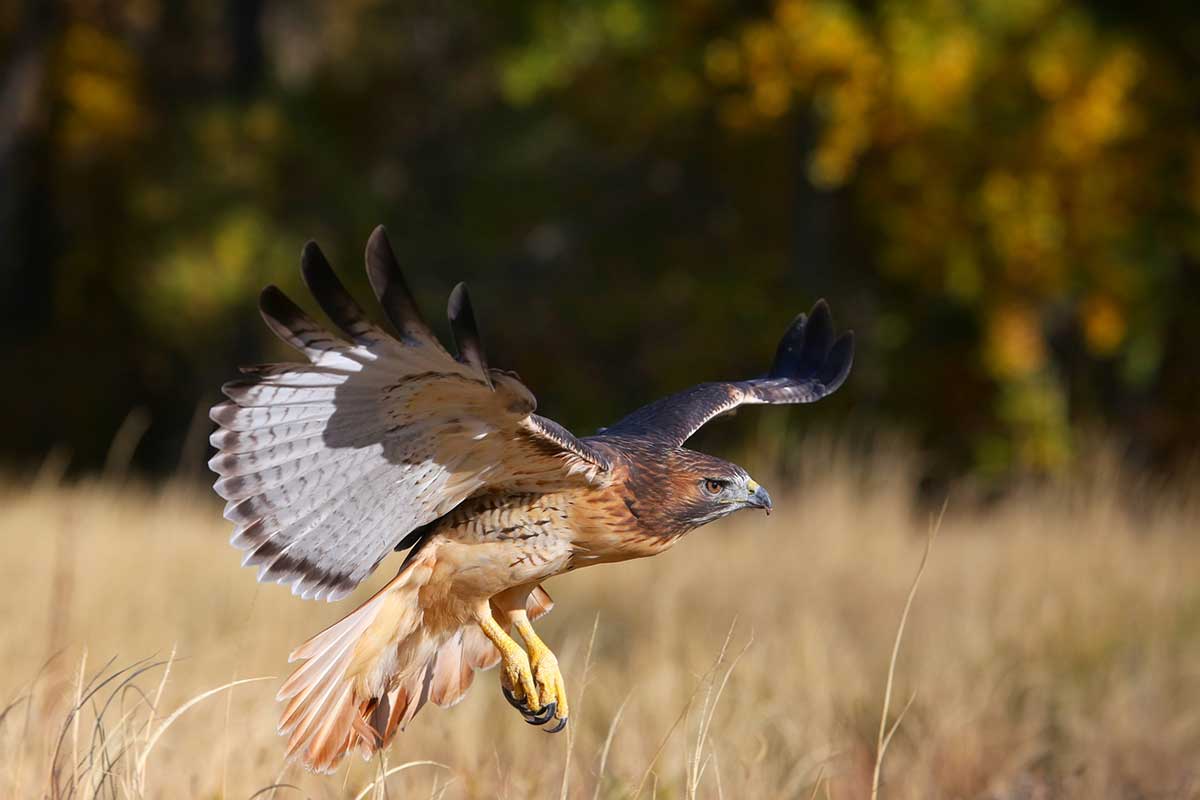
Geography and Characteristics
Red Tail Hawks can be found flying over open fields or perched in trees or on telephone poles throughout the United States. They are birds of prey, so they are particularly dangerous if you have a small pet like a Yorkie or raise chickens or ducks. They will see them as prey, swoop down, grab them and fly away.
Red Tail Hawk Sounds
In flight, these hawks have a hoarse, high-pitched scream that makes a sound like “kee-eeeee-arr.” When they are mating, you are likely to hear “chwirk.” There are usually several of these shrill calls in a row.
What Does an Owl Sound Like?
Play the clip below to hear the sounds an owl makes.
Owls
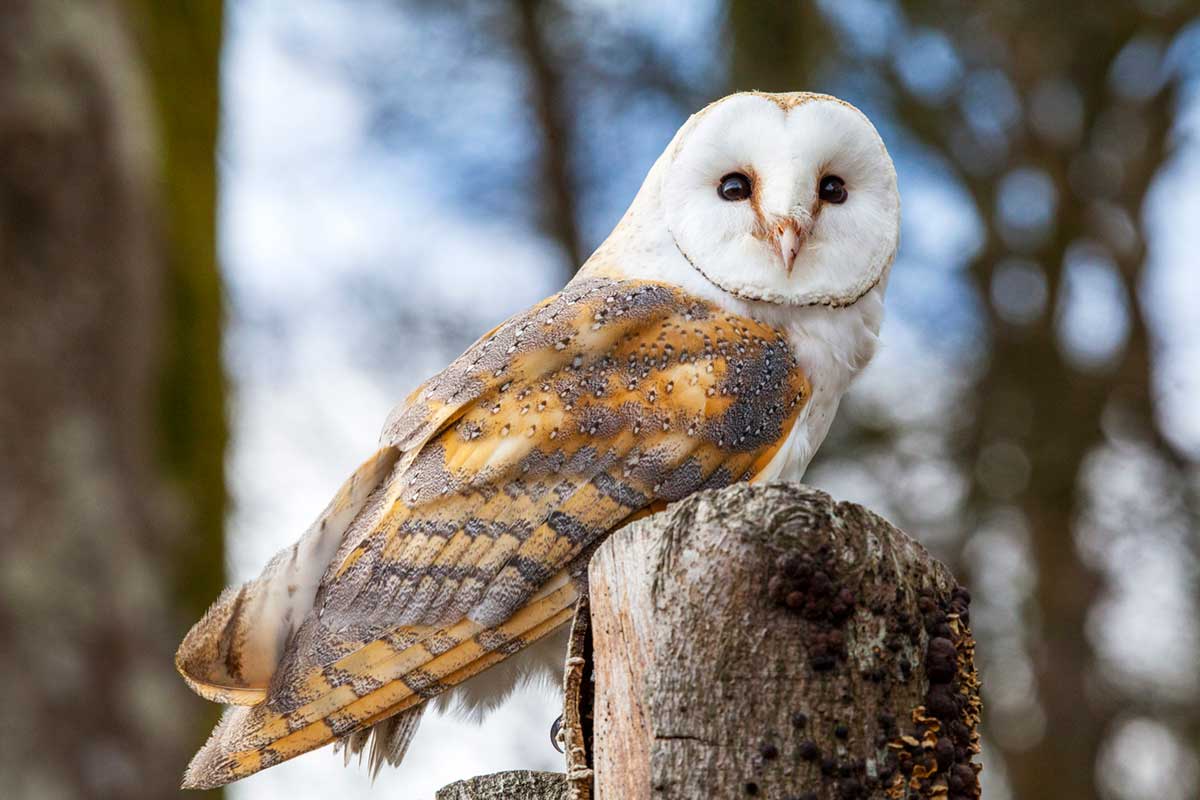
Geography and Characteristics
Don’t let the heart-shaped face of the barn owl fool you; they are not loving creatures. They are keen predators who tend to make their homes near human dwellings. They can be found all over the United States, but are the most plentiful in the West, Southwest, and Southeast. You’ll find them mostly around farms, and they certainly help control the rodent and pest population, but you should consider them another threat to your small pets. If they feel threatened, they have also been known to attack humans.
Own Sounds
The barn owl is nocturnal, so it’s more often heard than seen. And it doesn’t hoot like most owls. Barn owls hiss and scream.
The Barred owl, not to be confused with the barn owl, makes the classic “who who who” owl sounds, often hooting eight or nine times in a row.
The Great Horned Owl uses the similar “who who who” in their hooting, but the rhythm of their hooting stutters more rather than a smooth and even rhythm that the Barred owl uses.
Is It Cause for Concern?
Like most animals, an owl won’t attack you unless it feels threatened or its young are threatened. Therefore, if you hear an owl nearby, keep your distance, but go ahead and look. Owls can be fascinating to watch. If the owl is close to you, watch for any signs that it feels aggressive. The owl will puff its feathers out and snap its beak – a clear warning to stay back.
How to Avoid Owls
Owls are relatively harmless, but they can be a nuisance to your home if they decide to make a nest nearby. Since they’re pretty large birds, they can cause a lot of damage if they get inside your attic or home. You can prevent this by placing owl boxes around your property – this will give the owls a designated place to nest that’s away from your home.
Woodpeckers
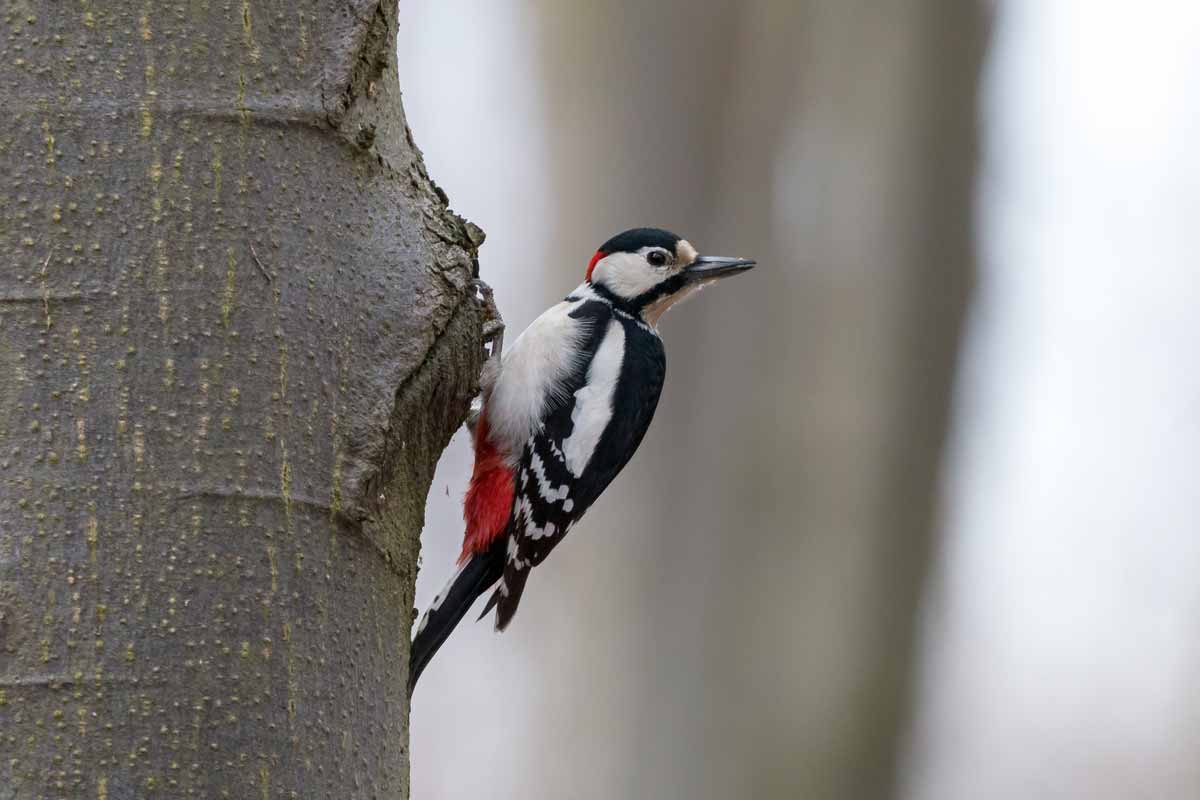
Geography and Characteristics
It may sound like construction, but it’s more like destruction if a woodpecker is pecking on the wood in and around your home. Different types of woodpeckers can be found in most parts of the United States. The birds are great for small pest control but can do incredibly extensive damage to your home if they decide it’s a good place to peck or search for food.
Woodpecker Sounds
Depending on the type, woodpeckers make rattling, piping or whining calls with different inflections. But they all can make a continual drumming sound as they are pecking against something. At first, it can sound like a hammer, but the constant drumming will indicate it’s a woodpecker. The bird can drum up to 19 times a second, or you may hear a slow, repetitive tap.
Pileated woodpecker sounds are some of the most common, with a staccato chirp that’s often used to alert others or to stake out a territory.
How to Prevent Woodpeckers
If you hear woodpeckers, know that they aren’t harmful to people, but can be extremely devastating to homes and the wildlife surrounding them. If you think you have a woodpecker problem, you can deter them by placing physical boundaries around your trees and home, including fencing and bird spikes. If DIY solutions don’t work, it could be time to call a wildlife removal professional who will make sure the birds are safely relocated to another area.
What Does a Frog Sound Like?
Play the clip below to hear the sounds a frog makes.
Frogs

Geography and Characteristics
Frogs are water creatures that are found mostly near ponds, streams, creeks, and lakes, but they also will take up residence in bird baths, outdoor koi ponds, and even pools. As long as you don’t bother them, they probably won’t bother you. Frogs do carry a lot of bacteria and parasites, like salmonella, so it’s best not to touch them. There is one frog in the U.S. called the pickerel frog that emits a secretion that can be irritating to humans and poisonous to some animals.
Frog Sounds
Frogs can make chirping or croaking sounds, but it’s only the male you will hear. The sounds frogs make can even be heard while they are underwater. One of the most common species of frogs that you’ll likely hear at night is a bullfrog. These make a low, steady “ribbit” that sounds similar to a rhythmic horn.
Opossums
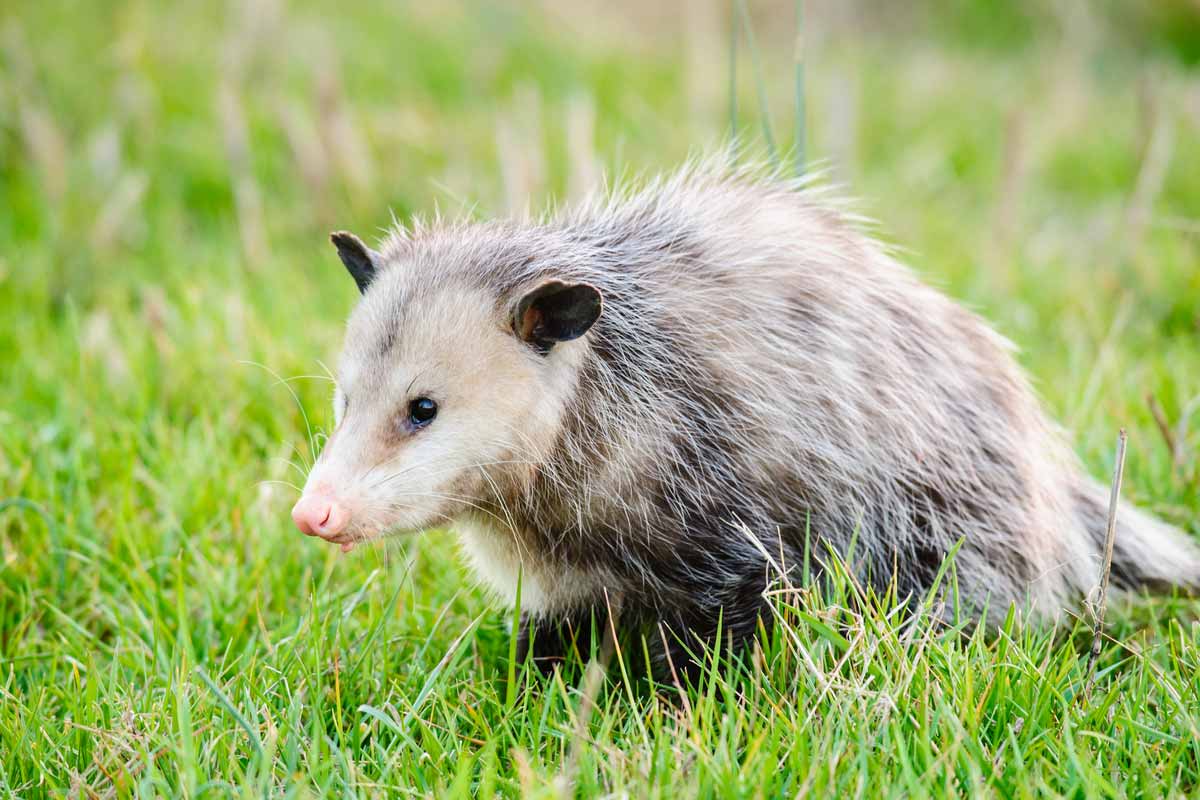
Geography and Characteristics
Opossums, also known as possums, are some of the most common critters you’ll see in the U.S. They crawl around at night and are known to get into garbage, basements, attics, and garages. Though they aren’t dangerous to humans, they’re notably frightening to spot since they’re about the size of a house cat with a skinny, hairless tail like a rat’s. They prefer a wooded, moist habitat, so they’re most common towards the Southern U.S., both of the coasts, and up through the Central and Northern U.S. towards the Great Lakes.
Opossum Sounds
You’re more likely to see an opossum than hear one. Though they’re skittish, they’re very active at night and aren’t known to be the smartest animals in terms of avoiding danger. However, if you do hear an opossum it usually means it’s communicating with others.
The sounds they make will be low croaks, clicks or hisses, depending on what they’re trying to communicate. A hiss usually means they feel threatened, while other croaks and clicks are mating calls.
Is it Cause for Concern?
If you see an opossum hissing at you, steer clear. It is very unusual for an opossum to feel threatened by a human rather than just running away or playing dead. Another cause for concern is if you hear scratching and “cooing” in your attic, garage, or basement. These could be signs that an opossum is scavenging there, and the “cooing” noises could mean a mother opossum has set up a nest for her babies.
How to Prevent Opossums
To prevent an opossum nest on your property, use exclusion practices like fencing and sealing up any holes in your roof or foundation. Inspect for any other entryways for a small animal, and make sure they’re covered.
If you’ve already identified an opossum living in your home, call a wildlife professional to remove the animal safely. If you try to corner an opossum in an enclosed space, there’s a chance it could scratch or bite you and transmit diseases like tuberculosis.
Raccoons
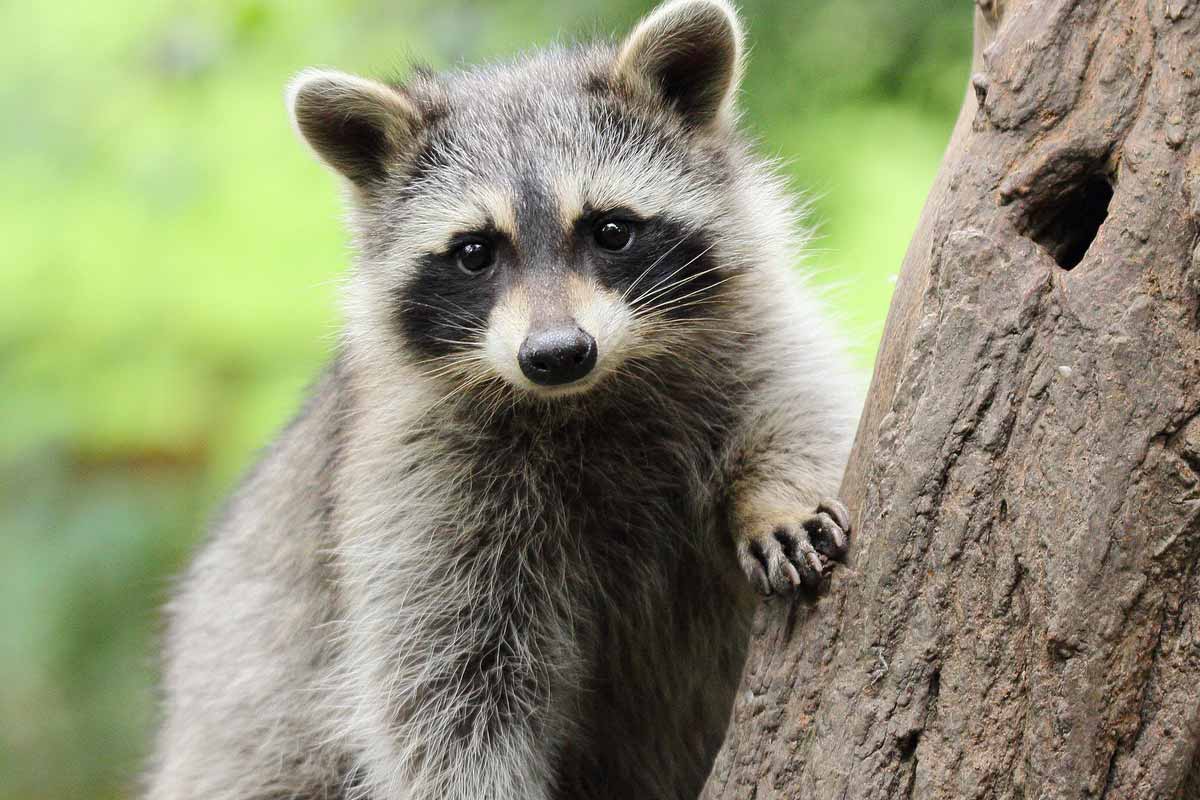
Geography and Characteristics
Like opossums, Raccoons are a common critter found throughout most of the United States. They’re known for not being shy, and aren’t afraid to come directly up to a home or humans in their search for food. Raccoons are very identifiable with their cat-size body, dark circles around their eyes similar to a classic bandit, and small, human-like hands that they use to grip food. They’re ideal habitat is wooded areas where they can make dens in burrows and trees, but they’ve adapted easily to urban and suburban neighborhoods.
Raccoon Sounds
Raccoons actually make chirping noises and squeaks that sound similar to birds, but raccoons do have a wide range of vocalizations that can also include growling, screeching, hissing and whining. Raccoons fighting have been said to sound a lot like cats fighting, while raccoons mating have also been confused with fighting screeches.
What Does a Bat Sound Like?
Play the clip below to hear the sounds a bat makes.
Bats
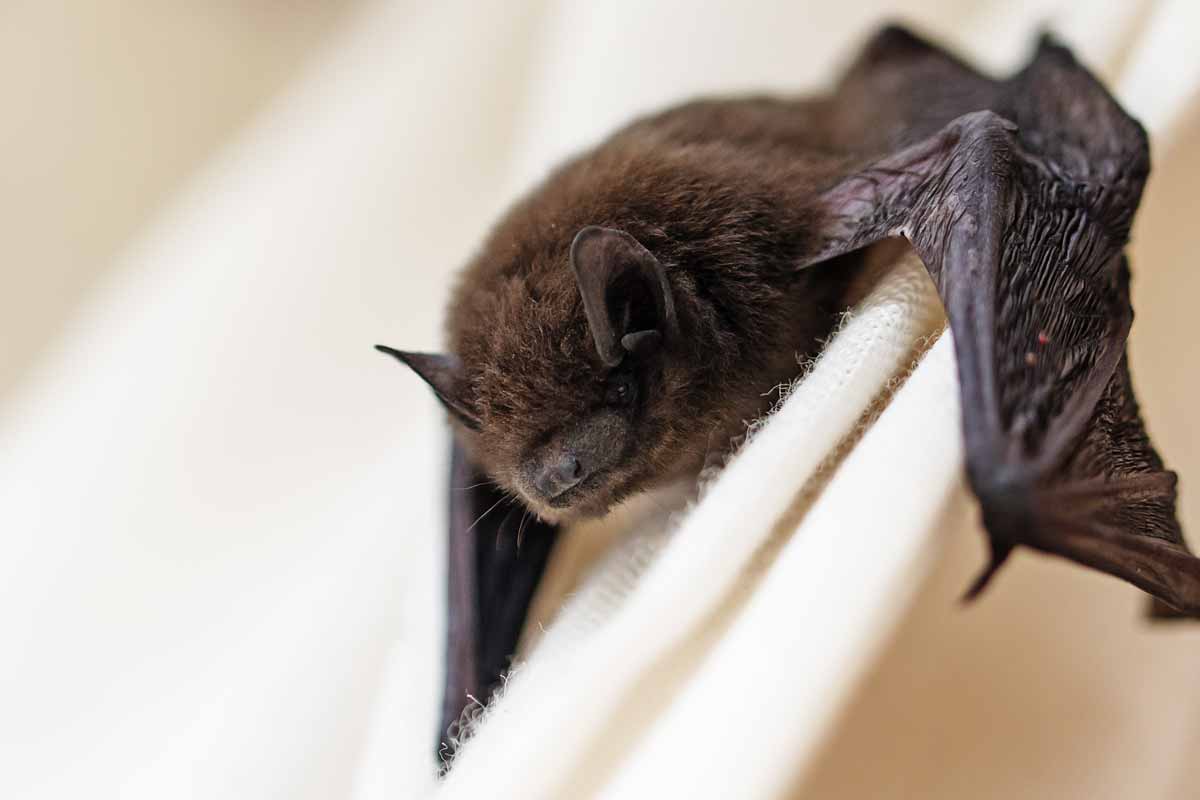
Geography and Characteristics
Bats have been used as a symbol for frights and spooks for a very long time. They’re eerie squeaks, fangs, and ability to fly fast make them seem like big threat should you stumble upon them. However, bats really pose no threat to humans, and can even be a big help by reducing insects in the area where they’re residing.
There are more than 1,000 species of bats that reside all over the world. In North America, there are about 40 species that can be found in most regions in the U.S. Bats are nocturnal and aren’t common to come across, but they do fly out to hunt right at dusk. Since there are so many species, they can be found in a variety of habitats, but they tend to roost in trees, caves, and roof spaces.
Bat Sounds
The sounds bat make are a very identifiable, high-pitched squeak. They use these noises to find their way around, since they’re blind and rely on echolocation to determine where they’re going. Bats also produce ultrasonic sounds for this purpose, which are undetectable to human ears.
What Do Mice and Rats Sound Like?
Play the clip below to hear the sounds rodents make.
Mice and Rats
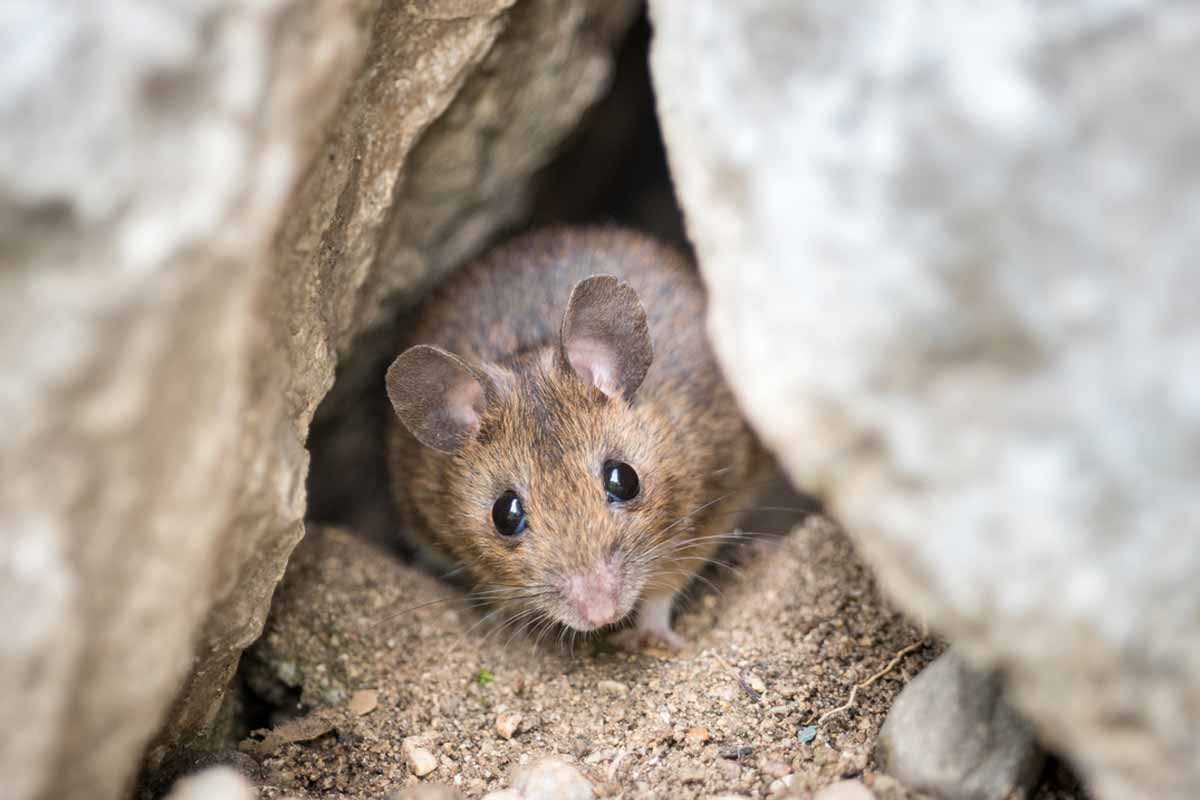
Geography and Characteristics
Mice and rats are ubiquitous pests throughout most of the United States. These critters can easily get into homes, and are known to cause quite a fright, especially when they’re seeking warmth during the winter months.
Though similar, there are a couple easy ways to tell the two apart. Mice are always smaller with big, floppy ears and slim tails that have a little bit of hair. In comparison, rats are larger with smaller ears and longer tails that are completely hairless.
Both run fast and can cause a whole host of problems if they make a home within your property.
Mice Sounds and Rat Sounds
Both mice and rats make similar sounds that are often indistinguishable. You’ll know that there’s either a mice or rat nearby if you hear high-pitched squeaking and scratching. They both have long nails that make a noise against the ground as they scurry across, and the scratching sounds will be indicative that they’re crawling or trying to dig.
Is it Cause for Concern?
If you’re hearing mice and rat squeaks along with scratching, gnawing and scurrying throughout your home, you should take the steps to inspect for an infestation. Both mice and rats like to set up their dens in secluded, safe areas where there’s material they can use for their nests – so attics, garages, closets, and other storage spaces. If you’re constantly hearing noises, check these areas as soon as possible.
How to Prevent Mice and Rats
If you do have a mice or rat infestation, you should call a pest control professional to take care of the problem for you. Both rodents reproduce fast and can cause damage through their poop, scratching and gnawing, so the problem may also need a professional clean.
To prevent rodents getting inside your home, take the time to seal up any entryways, and always be sure to keep your home as clean as possible.
What Do Rattlesnakes Sound Like?
Play the clip below to hear the sounds a rattlesnake makes.
Rattlesnakes
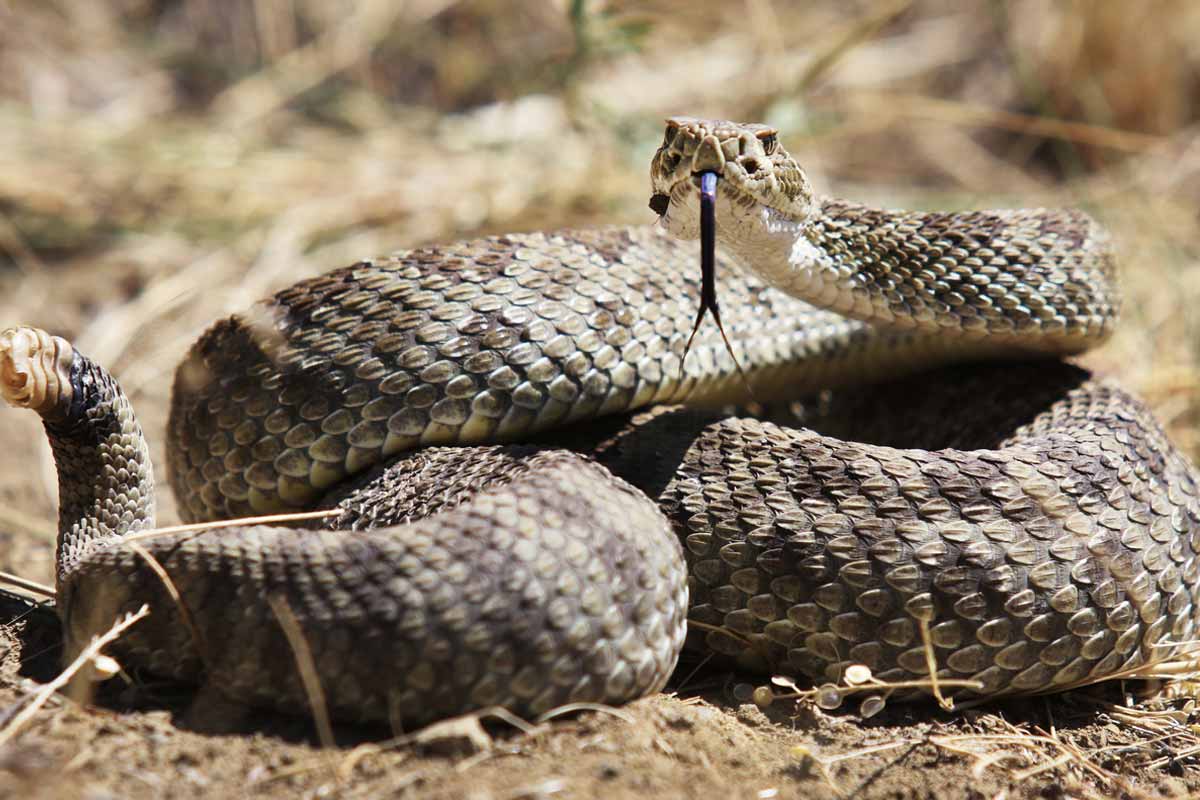
Geography and Characteristics
Rattlesnakes tend to reside in grassy, dry and arid climates. In the United States, they’re found in the South, mainly in Texas and Arizona, and east of the Mississippi river.
Rattlesnakes are easily identifiable by the rattle at their end of the tale as well as the sounds they make. The Rattle is a textured section at the very tip of their tail with a color different to the rest of their body.
Rattlesnake Sounds
A rattlesnake’s rattle is named appropriately, since it sounds so similar to a baby’s rattle. When they use this sound, it’s to warn predators to stay away. Even if you didn’t know a rattlesnake was dangerous, the sound surely is eerie enough to serve as a good warning for all. If you’re out hiking and hear this sound, stay away. If you can’t find exactly where the sound is coming from or where the snake is, pause for a second and wait until you see movement so you don’t end up coming closer to the snake.
Squirrels
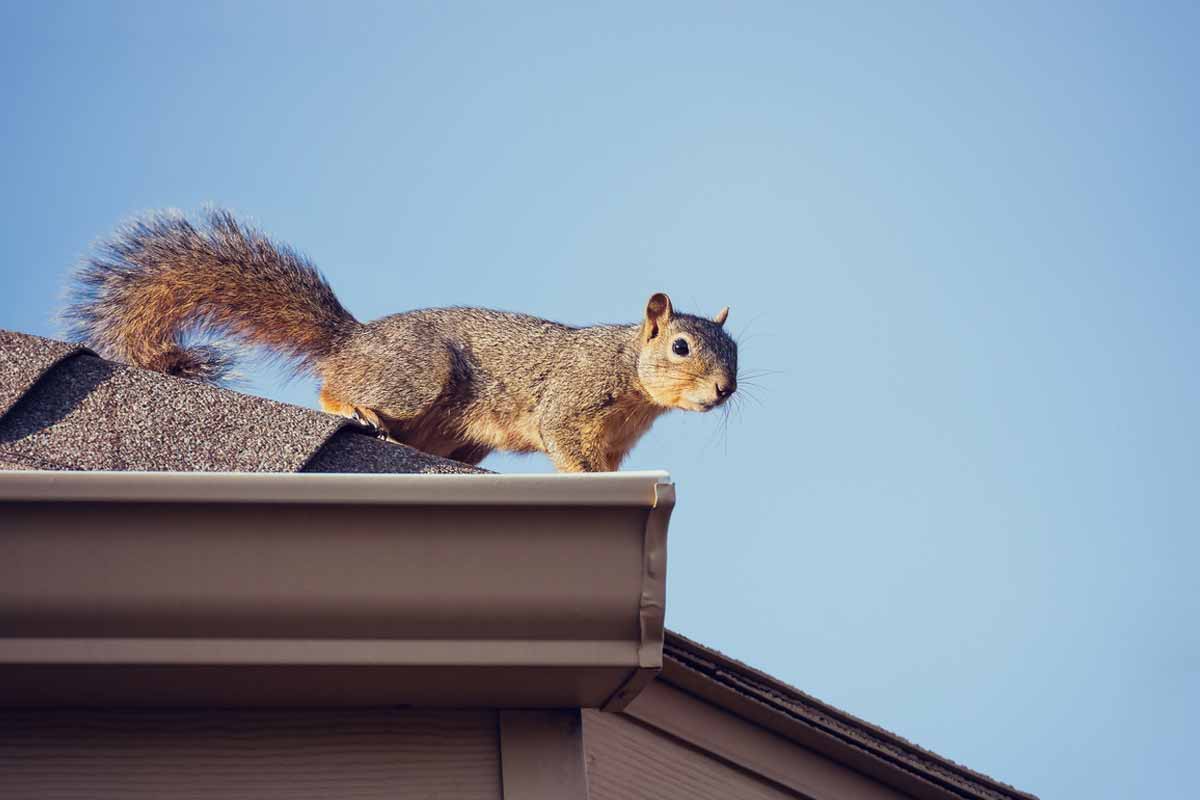
Geography and Characteristics
Squirrels are present nearly everywhere in the U.S. They’re extremely adaptable and are a type of critter that often makes their homes near human houses, suburban neighborhoods, and even urban cities. If you’ve seen a squirrel, it was likely scurrying across the ground in search for nuts and other food, other scaling trees and light posts on its way to its nest.
They’re small, usually slightly bigger than the size of a rat, and have a distinct bushy tail. They also usually range from grey to a brownish color.
Squirrel Sounds
Squirrels make a lot of noises and aren’t shy to use their vocals. The most common you’ll hear in a residential area are red squirrel sounds. They usually make a chirping or clicking sound that is similar to a bird. It can even be hard to distinguish their sounds from the birds that are also present in residential and urban settings. However, if you hear what sounds like a squirrel it will be very easy to spot it outside.
How to Prevent Squirrels
Squirrels are skittish and flighty, and they won’t stick around if you get too close (unless they’re injured). They pose no threat to humans, but can cause some damage to your home if they do get too close. If you own a garden, they’ll feed on many types of plants and can even dig up roots. If they get inside your home, they’ll cause damage to wood walls, ceiling and furniture, and cause a huge mess with their droppings.
To prevent squirrels on your property, guard your vegetation with fencing and eliminate any small entry points to your home by inspecting and sealing holes.
Rabbits

Geography and Characteristics
Rabbits aren’t just a cute pet. Wild rabbits can be found in a variety of habitats, including meadows, forests, woods, and suburban neighborhoods. Easy to identify from their long ears, slim feet, and distinctive hop, they move fast along the ground in search for food while avoiding predators.
Rabbit Sounds
If you see a rabbit, you aren’t likely to hear it. Though they don’t often make noise, they are capable of a wide variety of vocalizations. Happy rabbits are known to cluck, hum, and even purr. The sounds of rabbits in distress, however, are growls, hisses, whimpers, and even screaming. If you hear these distress sounds coming from a rabbit, they may be injured or afraid, but they won’t be dangerous to you.
Conclusion
The sounds animals make can be peaceful and enjoyable to listen to, others are downright frightening. It’s important to remember as long they aren’t threatening you or your property, you shouldn’t threaten them. Animals are a significant and valuable part of nature by either helping the environment thrive or helping control the pest and animal population. So, it’s a good idea, if you can, to just let them be. In other words, don’t poke the bear.
Sources
www.sfgate.com/outdoors/article/Study-finds-mountain-lions-are-feasting-on-house-6829205.php
bigcatrescue.org/cougar-facts/
nature.mdc.mo.gov/discover-nature/report-wildlife-sightings/mountain-lion-reports/mountain-lion-signs
icwdm.org/handbook/birds/HawksOwls.asp
www.allaboutbirds.org/guide/Red-tailed_Hawk/sounds
www.aphis.usda.gov/publications/wildlife_damage/content/printable_version/coyote_Dec2011.pdf
urbancoyoteinitiative.com/translating-the-song-dog-what-coyotes-are-saying-when-they-howl/
abcbirds.org/bird/barn-owl/?gclid=Cj0KCQiAmuHhBRD0ARIsAFWyPwjkyEZOTMnkzO-d4tLeFDZ_XMhMsFmhdZaAupvj9IhCP56AVElB9CYaAl1QEALw_wcB
www.barnowlbox.com/barn-owls-by-state/
www.in.gov/dnr/fishwild/3382.htm
www.allaboutbirds.org/guide/Red-headed_Woodpecker/sounds
defenders.org/bobcat/bobcats
blog.nwf.org/2012/06/things-that-go-bump-or-hoot-in-the-night-5-animals-you-may-hear-while-camping-in-your-yard/
www.mnn.com/earth-matters/animals/stories/whats-that-sound-7-wildlife-calls-you-might-hear-in-your-backyard
www.wildliferesponse.org/new-education/local-wildlife/foxes-of-north-america
www.popsci.com/science/article/2013-09/what-sound-does-fox-make
www.tripsavvy.com/cicadas-come-to-washington-dc-area-1038249
minnesota.cbslocal.com/2013/09/04/good-question-what-bugs-creating-all-that-late-summer-buzz/
www.bugfacts.net/katydid.php
ipm.ucanr.edu/PMG/r107300411.html
en.wikipedia.org/wiki/Pickerel_frog